(The discussion below took place in Mandarin, and has been translated into English for the purpose of this article)
(Published 16 August,2021)
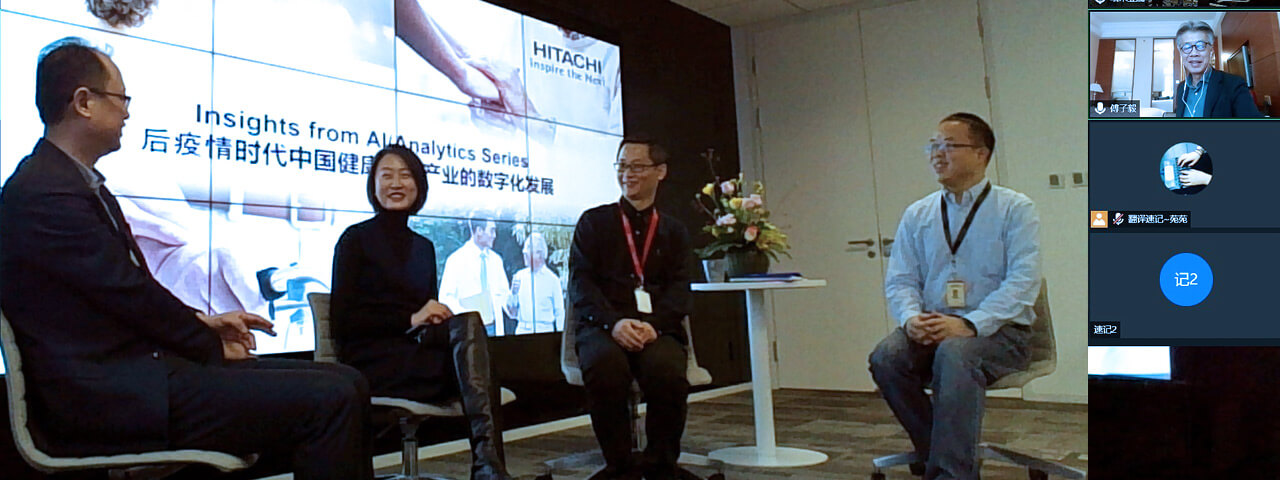
Yuanchen
Digitalization has changed the way people live, communicate, and socialize. It has greatly improved efficiency and convenience in daily life. China is embracing this digitalization of society, as more services are enabled and the population coverage also increases with digitalization. The elder care industry also stands to benefit from this trend. I’d like to start with asking our esteemed guest from Tsinghua University - how is China’s elder care industry doing with digitalization?
Xueqian
As I see it, China’s elder care market has gone through three stages, namely the primary stage before 2010, the pre-takeoff stage from 2010 to 2020, and the takeoff stage beyond 2020. Before 2017, China had rolled out a series of guidelines and policies on elder care, including those on digital transformation toward smart elder care.
Elder care encompasses everything from nursing to technology for older adults to pension finance. In recent years, China has been pushing for the use of the Internet in elder care — that is, leveraging 5G and big data technologies to integrate resources within and outside of the elder care industry. Such policies are beginning to generate some changes.
Qi
HSCN is one of the first companies in the Hitachi Group to enter the eldercare market in China. We feel that digitalization is indeed a major trend in the industry. Digital transformation is especially crucial to home-based care for older adults in the post-COVID era. Against the backdrop of digitalization, we are empowered to offer the first digital services, which will become the wave of the future. With the commercial use of 5G technology in China, even remote regions can have access to such services.
Ziyi
A main characteristic of elder care is that it is not a one-way service. In addition to technology, we also need to take into account follow-up services. Take the monitoring system as an example. How can we achieve remote control and take our services online? This requires better technical operability and further practical experience.
Yuanchen
Just now, you mentioned the impact of the COVID-19 pandemic. Are there any other difficulties in advancing digitalization?
Qi
Telemedicine has been attracting a lot of attention for a long time. In the IT era, telemedicine was a programmatic or initial exploration. The emergence of 5G, augmented reality, virtual reality and other cutting-edge technologies makes telemedicine a reality. For now, a more important issue is how to solve the problems facing older adults. For example, we are now trying to figure out how to apply virtual reality technology to rehabilitation services. We are also working with Chinese robot manufacturers to explore some artificial intelligence–empowered robot services. However, robots cannot solve every problem, and it will take a long time to truly achieve anthropomorphism.
Ziyi
Robots can be roughly divided into three types. The first is assistive robots, which are designed to solve the lack of manpower. For example, hospital bed trapezes can assist or facilitate older adults or patients in getting in and out of bed. The second is automated robots, which can completely replace human beings. The third is communicative robots, which are good at communicating with people. When it comes to artificial intelligence, the internet of things, or robots, what first comes to their minds is full automation that can completely replace humans. In fact, the most- needed function is communication, especially in the post-COVID era. Older adults are not as handy as young people with devices, and the pandemic has forced people to keep a safe distance from one another. In my view, the biggest potential of robot technology is not to replace human labor but to satisfy the communication needs of older adults psychologically.
Xueqian
A big problem we may encounter is that many older adults don’t really understand why this technology is necessary to help them or why they need to use these devices, which seem to hold little significance to them. However, it means a lot to their children, caregivers or service agencies, who may want to know more about relevant data, which can be used for health assessments or interventions.
Qi
When it comes to smartphones, for one thing, many older adults are reluctant to pay for them, whether they know how to use them or not. For another, many applications require registration and verification codes, which may be complicated for older adults — but such procedures are necessary for the sake of privacy protection. Privacy concerns also add to the difficulty of popularizing smart devices among older adults.
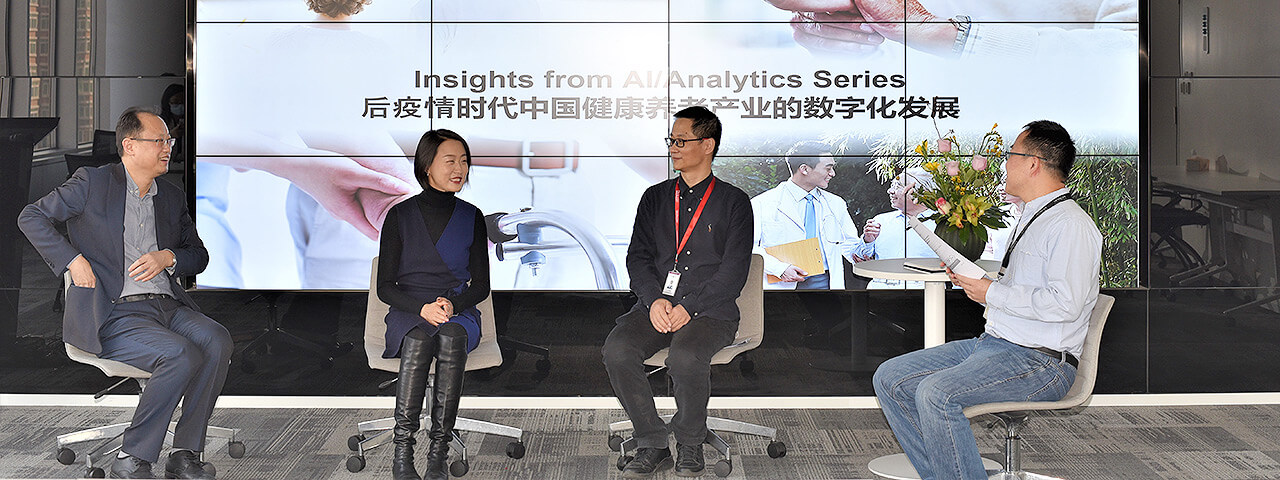
Yuanchen
The government has an instrumental role in ensuring that industry develops efficient and effective care that raises the quality of life for the elderly in China. Which policy measure do you think are particularly noteworthy?
Qi
China has been exploring how to develop elder care into a full-fledged industry. The elder care industry is worth trillions of yuan, and the key lies in how to integrate it with other sectors. The government has recently adopted various policies on pensions and nursing care and has allocated a lot of funds for the implementation of these policies, with attention paid to the effect of the policies on the industry. For example, in response to the serious nursing shortage, the central government has not only provided subsidies but also encouraged localities to organize nursing care training. According to my observation of the government driven projects and latest industry trend, top-down design is of vital importance. However, relying on the government alone will not be a long-term solution. In addition, the engagement of the financial, securities and insurance industries can help fundamentally to solve the problems in elder care.
Ziyi
When we speak of elder care, we tend to concentrate on how we, as service providers or developers, can provide better services for older adults. In contrast, the government is more concerned with how to address rigid demand or how to mobilize local enterprises, including manufacturers, service providers, and developers, to build an industrial chain or system.
Xueqian
According to China’s 9073 policy, 90% of older adults will receive home-based care. This is an enormous market. The questions are: Who will provide such services for them, and who will pay if they want to use robots? This involves the cost of robots and intelligent products, and it will require a sustainable model.
Yuanchen
For the elder care industry, is it possible for insurance companies or other institutions to invest in the industry as a consortium independent of the government?
Qi
We are discussing with some insurance companies what kind of models can be used to promote the development of the elder care industry. It is true that without large insurance companies and financial institutions, the country may be unable to afford supporting the elder care industry once economic growth slows down. In that case, the industry will be unlikely to grow fast.
Xueqian
There is a chance that some businesses will not survive for 10 years. According to the catalogs of enterprises engaged in smart elder care, some startups are “burning money,” which is bound to be unsustainable. In this case, even if the products are successfully developed, the big question is who will manage or operate those products.
Xuemeng
Elder care is a forward-looking industry, and it requires a large amount of investment in its early stages. In addition to government support, funds from other sectors of society are also needed to cultivate the industry. There are two important points to be addressed. First, there must be a closed loop from data collection and analysis to customer value provision and to monetization. Second, there must be an online-offline integrated platform that enables the combination of remote, intelligent, digital virtual technologies and offline services. To ensure that the development of the elder care industry is sustainable, it will be necessary to integrate with insurance and other industries.
Ziyi
A key phrase for the elder care industry is “rigid demand.” The target groups of rigid demand include not only older adults who directly benefit from our services but also their relatives who care about their health, and insurance companies that intend to strengthen their competitiveness. Insurance can be divided into two categories. One is insurance provided by the government, and the other is commercial insurance. If we can develop and provide a suite of services in response to these insurers’ needs for digital technology to help enhance their competitiveness, that will become a kind of “rigid demand” for them.
Yuanchen
Hitachi has been looking at how our technology can be used to raise the quality of life for the elderly in China. We’ve explored various business models. Could you share with us the progress that Hitachi is making, and what are the key challenges that you’ve experienced.
Qi
In the past, we mainly cooperated with the government in providing elder care services. As we see it, the government has done a good job of serving older adults and performing its responsibility, which has delivered great social benefit on the whole. From the angle of the government, it perhaps no longer wants to invest so much in this field because such investment actually plays a limited role in driving the development of related industries. Therefore, it hopes to promote the development of related industries by means of consumption. In other words, by providing subsidies for older adults or service personnel, it hopes to motivate older adults to purchase services themselves and service personnel to get related industries engaged.
However, this is no easy task. Put differently, we used to focus on the government, but in the future, we may focus on providing diversified services for large real-estate developers, the insurance industry, and technology giants such as JD.com and Tencent.
Ziyi
Hitachi believes that elder care is not merely direct care and nursing; instead, we put greater emphasis on prevention. But the question is: Who will pay the bills? For example, if we take the screening for dementia, diabetes, or cancer as an independent specialized service, we must take into account the cost for the service provider and the equipment, among other factors. If it is integrated into a standard package of services, we must consider who will provide such services.
Although commercial insurance companies are not a direct beneficiary of disease prevention services, they can help reduce their customers’ risk of illness by promoting such services, thereby scaling down their annual medical expenses. In this way, they become an indirect beneficiary. The same is true for the government’s insurance programs. After the introduction of the long-term care insurance system, the next step is to consider how to popularize disease prevention services to improve the health of the entire population, to reduce the government’s overall spending on healthcare. We will continue to focus our research and development on technological innovation in disease prevention in the future. This is a forward-looking challenge that sets the direction of our efforts.
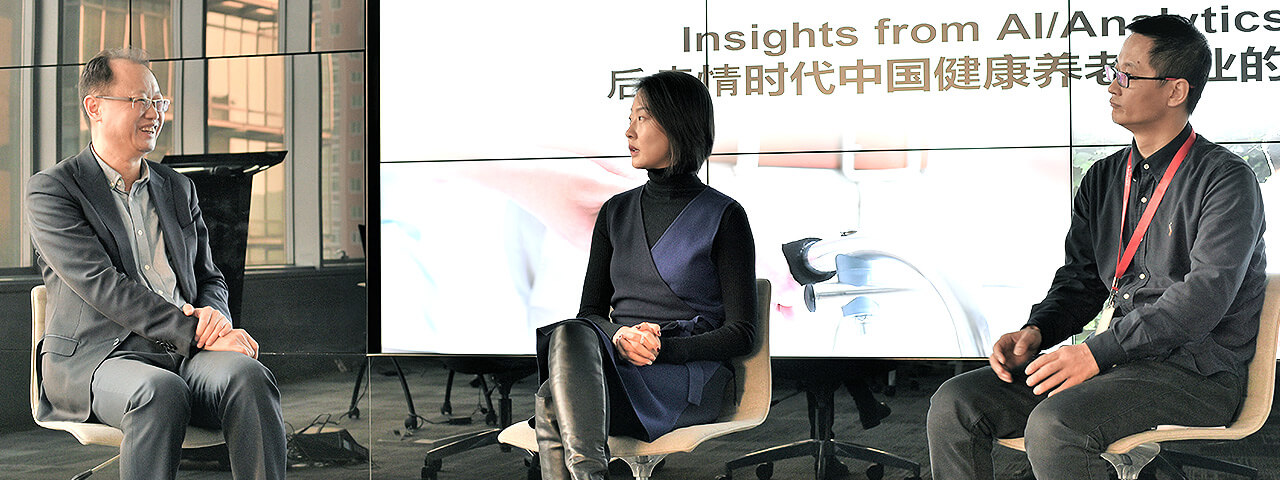
Yuanchen
Hitachi has developed video-based analysis technologies. From the standpoint of R&D, how can Hitachi support the building of a new elder care system based on existing technologies?
Xuemeng
Currently, we carry out technology-driven open innovation activities in cooperation with startups, Tsinghua University, business groups and other organizations by making full use of the Hitachi (China) R&D open innovation platform. And for health monitoring and security monitoring based on contactless, remote technology, we have developed a 24-hour monitoring solution for older adults at home.
Because the primary concept of this solution is contactless and remote, it solves older adults’ difficulty in adapting to mobile phones or other devices. We want to leverage some millimeter-wave radar technologies to monitor the daily activities of older adults, such as falls, without causing any sense of intrusion. Hence, in the event of danger, we can notify the police and other emergency response teams and come to help them in a timely manner.
Meanwhile, we use smart sleep sensors and platform-based software to monitor older adults’ sleeping heart rate, breathing and other physical signs. We hope that through daily health monitoring, we can get the necessary data to analyze their physical conditions and health status and give them some early warnings when necessary. Thus, we can provide early intervention to help reduce the risk of dangerous diseases.
Qi
As business needs become increasingly complicated in the post-COVID era, the requirements for technology are also getting more complex. Some solutions may not work well in real-world scenarios. Various disruptive factors in the home may point to the need for upgraded technologies in the post-COVID era.
Xueqian
I think that a more important issue is how we can provide effective advice for older adults after the technologies are implemented. This involves data collection and analysis.
Ziyi
Another important topic is monitoring technology. The higher the accuracy of monitoring technology, the greater the role it plays in warning of danger. In this sense, it is indeed a kind of rigid demand. But if we go too far and blindly pursue accuracy of the response to falls, for example, it may backfire. That is, overemphasis on “alarming” weakens the more valuable function of “early warning.” In other words, we should focus on how to further improve monitoring technology so that it enables us to provide timely services when older adults are in need rather than remind us to help them up after they fall. After data collection, how should we use the data and give feedback accordingly to give an “early warning” rather than an “alarm”? I think this holds high practical relevance and is the direction of our future work.
Yuanchen
What do you think is involved in ideal elder care? What are the technical challenges in digitalization and other aspects?
Qi
Artificial intelligence and big data go far beyond data collection. What’s more important now is how to analyze the data and provide feedback during the communication process, such as dilated pupils, quicker breathing and smiles.
Ziyi
Currently, many technologies are developed from the perspective of managers or developers, such as the emphasis on efficiency. In the future, we should give more consideration to how to promote two-way communications and create an interactive environment, which will enjoy broad prospects in the future.
Xueqian
When the material needs of older adults are met, they start to pursue spiritual satisfaction. How to help older adults who live in their residence or in a community, meet higher-level needs for them, and help them fulfill themselves is a meaningful topic.
Xuemeng
China has a large population whose needs are complicated and diverse. This will give rise to various elder care models. As families get smaller, there will be fewer people we can communicate as we age. Digital technology makes it easier for us to find like-minded communities outside of our families and living out our life together with those people may be a growing trend.
(As at the time of publication)

LIU Xueqian
Senior User Experience Researcher, Institute of Human Factors and Human-System Interaction,
Tsinghua University
LIU Xueqian graduated from the State University of New York at Buffalo with a degree in Human Factors/Ergonomics. Her research interests at Tsinghua University include elder well-being and inclusiveness, technology for the aged, collaboration between industries, universities and research institutes, and public interests. She is the initiator of the “Becoming My 70s” public interest campaign and a member of the volunteer corps of Beijing Smart Elder Care Action. She has published a number of SCI/EI papers, played a key role in drafting one national standard, and participated in the “Research and Development of Intelligent Elder Care System Based on Technology Acceptance,” a project supported by the National Natural Science Foundation of China.
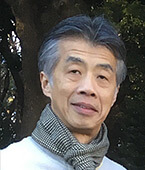
FU Ziyi, Ph.D.
General Manager,Smart Healthcare Group,
Hitachi (China), Ltd.
FU Ziyi graduated from the University of Tokyo with a Ph.D. degree in Health Education. He is currently responsible for digital technologies integration of Hitachi Group and working with partners to explore personalized healthcare and elder care solutions within the “secure and safe” smart living framework. He participated in the R&D and commercial verification of the Digital Care Management (DCM) system together with the R&D team of Hitachi (China) Research & Development Corporation. Backed by Hitachi’s digital detection and sensing technology, the system can quantitatively assess the cognitive and physical functions of older people and recommend personalized preventive and training solutions for them.
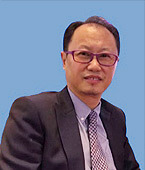
LIN Qi
General Manager, Health and Pension Business Division,
Hitachi Solutions (China) Co., Ltd.
LIN Qi is currently in charge of the integrated smart healthcare platform and relevant services at HSCN. He participated in the construction and promotion of the smart elder care and service platforms of Pinghu City and the Economic Development Zone of Jianxing in Zhejiang Province, Changzhou in Jiangsu Province and Weihai in Shandong Province. The platforms have been launched in five cities in the three provinces and provided a range of services for over one million customers. The number of older people registered on the platforms exceeds 200,000.
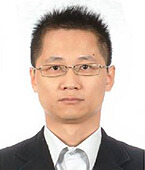
YU Xuemeng
Senior Researcher, Customer Co-creation Project,
Hitachi (China) Research & Development Corporation
YU Xuemeng holds a Master of Engineering degree from the Department of Automation, Tsinghua University. He currently serves as a senior researcher in the Customer Co-creation Project, and is responsible for new healthcare and elder care businesses in cooperation with start-ups, Tsinghua University, Health and Pension Business Division of HSCN, etc. He has participated in consulting services and system design, development and management for major projects in various fields such as finance, transportation and smart community.
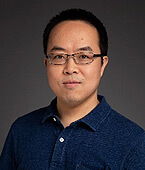
MA Yuanchen
Director, Digital Service Platform Research Department,
Hitachi (China) Research & Development Corporation
MA Yuanchen is currently leading big data and AI research in the China region. His work spans various fields related to AI and big data, such as IoT, big data platforms, natural language processing and video analysis. He also supports Hitachi’s efforts in the development of technologies and solutions in healthcare and elder care, intelligent manufacturing, smart city, and other fields.
He holds a Master of Engineering degree from the Department of Electrical Engineering of Tsinghua University and holds a dozen patents.